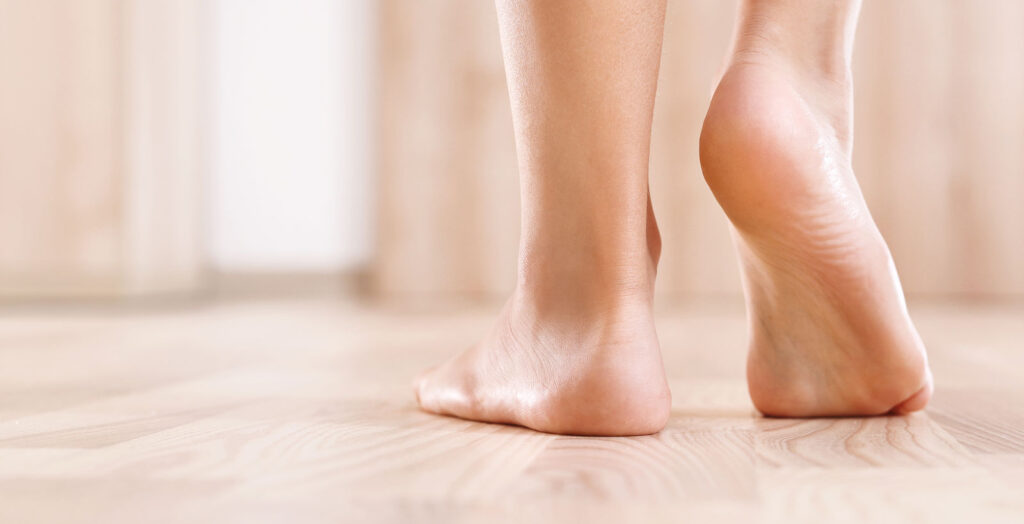
Plantar fasciitis is a prevalent and painful foot condition that can persist for several months. This article delves into how plantar fasciitis develops, risk factors, specific treatments, and exercises and stretches that effectively manage the condition.
What is Plantar Fasciitis?
The plantar fascia is a robust and thick band of connective tissue, which spans from the heel bone (calcaneus) to the forefoot, along the bottom of the foot. Supported by the ligaments and tendons of the foot’s extrinsic muscles (which connect to the lower leg), the plantar fascia prevents the foot’s longitudinal arch from flattening and plays a pivotal role in the foot’s mechanics during walking. Here the plantar fascia also bears a considerable load.
Plantar fasciitis occurs when this band experiences microtears or becomes irritated and inflamed. In other words, there is inflammation around the muscles and soft tissue on the foot’s underside. Medically speaking, since most patients with heel pain present without inflammation, the term “plantar fasciosis” would often be more accurate. Yet, the term “plantar fasciitis” is commonly used today to describe all instances of heel pain.
Plantar fasciosis entails acute or chronic overstretching, tears, and degeneration near the plantar fascia’s origin, close to the heel. Plantar fasciitis shares these characteristics but also includes inflammation. Both plantar fasciosis and plantar fasciitis may affect one or both feet simultaneously. The main symptoms include heel pain after getting up in the morning, which intensifies during the first few steps, or after sitting for extended periods. The symptoms usually worsen with prolonged activity and strain. The continued presence of pain also often leads to secondary symptoms such as an altered gait and posture in an effort to avoid pressure points.
Risk Factors for Plantar Fasciitis
To fully comprehend the risk factors for plantar fasciitis, it’s essential to understand the plantar fascia’s function. Acting as a shock absorber, it supports the foot’s longitudinal axis and aids in the “push-off phase” during the gait cycle when walking, running, and jumping, which imposes significant forces on the plantar fascia. Theoretically, any factor that disrupts the mechanical force transmission mechanism of the plantar fascia, which in its entirety is known as the “Windlass Mechanism,” can lead to plantar fasciitis.
The key risk factors are:
- Excessive jogging or a sudden increase in running distance
- Inadequate or worn-out running shoes
- Shortened Achilles tendons
- An extremely high or low longitudinal arch of the foot
- Limited midfoot (“metatarsal”) mobility
Additionally, weak and stiff plantar flexors are often identified in athletes with plantar fasciitis. The rehabilitation program should therefore focus on restoring strength and mobility to the affected tissue.
Exercises to Prevent and Treat Plantar Fasciitis
Here are exercises designed to mobilise the midfoot and strengthen the foot flexors, offering effective support in the healing and prevention of plantar fasciitis:
Midfoot Mobilisation
- Rest your foot on a tennis or fascia ball to locate a tight or painful spot.
- Apply your body weight to this point, allowing the joints of your midfoot to release upwards. Maintain this pressure for 5-10 seconds.
- Work in the same way on other points for a total of about 60 seconds, repeating several times a day.
Strengthening the Foot Flexors
- In a standing position, place your foot on the ground and identify the centre point among the base of your big toe, little toe, and heel.
- Lift your toes as high as possible and focus on your foot’s centre, while standing as stable as possible.
- Lower your toes slowly. Upon touching the floor, keep your foot tensed for a few seconds before relaxing and repeating.
- Perform this sequence five times, ideally multiple times a day.

